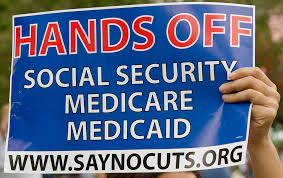President Obama’s 2015 budget proposal is far from Medicare friendly. It aims to reduce federal Medicare spending, over ten years, by about $371 billion with premium hikes and to raise about $53 billion by charging so-called high-income Medicare beneficiaries more.
Who Pays More?
Right now, if you have an income of $85,000 or are a couple with $170,000 income using Medicare Part B, you pay 35 to 85 percent for your doctors’ visits, lab work and other services. You pay about the same for prescription drugs in Part D. In comparison, most Medicare beneficiaries pay 25 percent of their costs.
But people with lower incomes could also be affected. According to Kaiser Health News a 2012 analysis by the Kaiser Family Foundation found that if a plan “…to have a quarter of all beneficiaries pay the higher premiums were implemented last year, beneficiaries with incomes at or above $47,000 for individuals and $94,000 for couples would be paying higher income-related Medicare premiums.”
That was last year.
This new proposal puts a bigger burden on Baby Boomers who turn 65 in 2017.
New To Medicare-You’ll Pay More
The plan calls for an additional $25 charge per year, starting in 2017, for Part B deductibles.
Medicare Supplemental or Medigap Will cost more
In 2017, if you’re new to Medicare you’ll pay more for Medigap, or Medicare Supplemental plans. The budget proposal calls for a 15 percent surcharge on the average premium. This apparently is an effort to discourage people from “over-using” expensive services.
In addition, the budget proposes a 1.9 percent cut in Medicare Advantage payments to insurers. Medicare Advantage is essentially the Medicare-managed care plans offered by private insurers. 30 percent of Medicare recipients are enrolled in these plans, according to the consulting firm Avalere Health.
As you can imagine, the industry group America’s Health Insurance Plans opposes the cut and has launched a vigorous campaign to try to defeat the proposal. It claims an analysis shows that if the plan goes forward, Medicare recipients face premium reductions and benefit increases of $420-$900.
PRESCRIPTION DRUG BONUS
On the good news side, for prescription drug plans the President proposes speeding up the timetable for reducing the “donut-hole,” the gap that occurs after you hit a limit in spending. In 2014 it is $2,850. After you reach the limit you have to pay almost 50 percent of the drug’s cost. If the proposal goes into effect you’d pay 25 percent in 2015. It’s important to note that drug makers oppose this reduction.
There is opposition on a number of fronts. Republicans and Democrats in the House and Senate have different budget plans that also include cuts to Medicare.
Medicare advocates are lining up to object to fee hikes.
Joe Baker, president of the Medicare Rights Center, called some parts of the president’s plan alarming and said he’s “…deeply concerned by proposals that would shift the burden of higher health care costs to older adults and people with disabilities living on low or modest fixed incomes.”
Comment and let us know what you think. Add your voice below.



